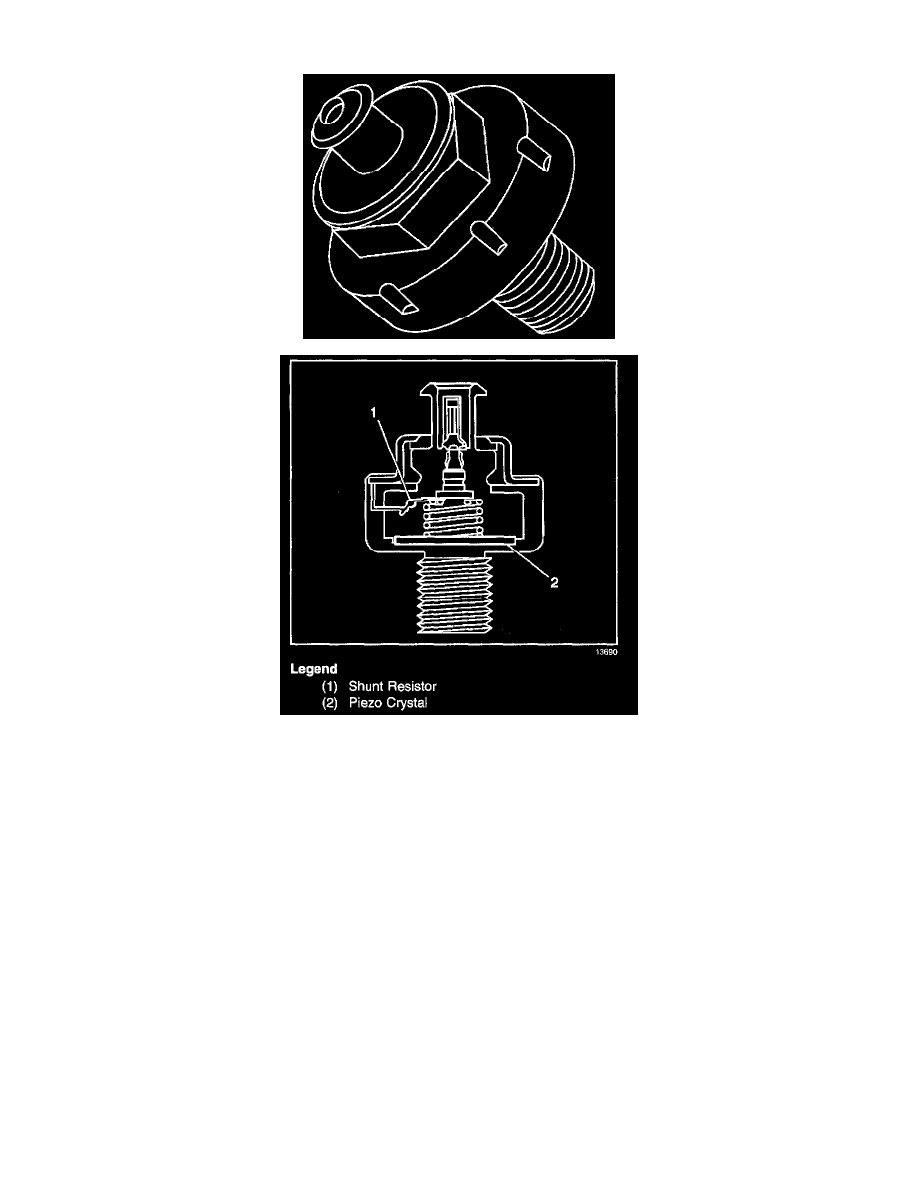Corvette V8-5.7L VIN G (1997)

Knock Sensor: Description and Operation
Knock Sensor Cutaway
DESCRIPTION
Varying octane levels in gasoline can cause detonation in some engines. Detonation is sometimes called spark knock. Detonation is caused by an
uncontrolled explosion (burn) in the combustion chamber. This uncontrolled explosion could produce a flame front opposite that of the normal flame
front produced by the spark plug. The rattling sound normally associated with detonation is the result of two or more opposing pressures (flame fronts)
colliding within the combustion chamber. Though light detonation is sometimes considered normal, heavy detonation could result in engine damage.
PURPOSE
To control spark knock, a Knock Sensor (KS) system is used. This system is designed to retard spark timing up to 20° to reduce spark knock in the
engine. This allows the engine to use maximum spark advance to improve driveability and fuel economy.
OPERATION
The knock sensor system is used to detect engine detonation. The PCM will retard the spark timing based on signals from the KS system. The knock
sensor(s) produce an AC voltage which is sent to the PCM. The amount of AC voltage produced by the sensors is determined by the amount of knock.
This signal voltage is input to the PCM. The PCM then adjusts the Ignition Control (IC) to reduce spark knocking.
SCAN TOOL DIAGNOSTICS
The scan tool has several positions for diagnosing the KS circuit.
^
Knock retard indicates the amount of spark the PCM is removing from the IC spark advance in response to the signal from the knock sensors.
^
Spark Indicates the amount of spark advance being commanded by the PCM on the IC circuit.
DTC P0325 indicates that the KS system is malfunctioning. DTCs P0327 and P0332 indicates that a Knock sensor or Knock sensor circuit is
malfunctioning. If these DTCs are set, Refer to applicable DTC table.
